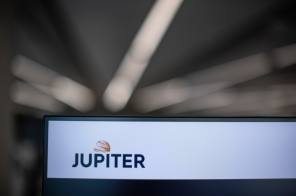

And we’ve had a tricky few weeks in the markets: share prices around the world have tumbled and developed market bourses are down around 5 per cent or more since the start of October, according to data from FE Analytics from October 1 to October 26 2018.
What looked like a temporary reaction to the Federal Reserve suggesting more interest rate rises could be on the cards, seems to have become a bit more of a prolonged downturn, with the world tech sector, in particular, hit hard.
The MSCI ACWI/Information Technology sector is down 10.1 per cent in sterling terms, since the start of the month – and the Faang stocks, certainly, appear to have lost their bite: results from Amazon and Alphabet (Google’s owner) both disappointed last week.
Whether the recent slump becomes more frightening for investors, or we’ll look back on this Halloween as having been a good time to buy on the dip, is anyone’s guess.
But it’s probably as good a time as any to make sure clients have at least a little downside protection in their portfolios.
When it comes to low correlations with equity markets, a fund I really like that has almost no correlation, compared with the FTSE All Share index and MSCI AC World index over three and five years to October 26 2018, at all (since the manager, James Clunie, took it on), is Jupiter Absolute Return.
Mr Clunie is something of a short selling specialist, having completed his PhD on the subject. Short-selling is therefore a key strategy of this fund, which invests primarily in global equities with the aim of generating a positive return in both rising and falling markets.
He uses three screens to analyse stocks over three different time horizons, to determine their ‘fair value’ and whether they are currently trading above or below that value.
Based on the result, he may then either invest in the stock or short it. A stock simply being overvalued will usually not be enough on its own to initiate a short.
Many other factors will also be considered, such as who else is shorting the stock and whether there is a potential catalyst that may cause the stock to fall in the near future.
Net market exposure at the end of September was -2 per cent, with 52 per cent of the fund’s assets in short positions (spread over 131 holdings) and 50 per cent of the fund’s assets in 92 long positions. Geographically, the 38 per cent net short on the US is the most significant.
The portfolio’s style will vary over time but generally it is likely to have a value bias – which it certainly does today.
The top 10 is dominated by a physical gold ETF and out-of-favour oil stocks from the UK and Russia. This, of course, could be very positive for the fund if we get the rotation from growth to value that some commentators are suggesting. It is certainly long overdue.
It is rare to find a fund with such low historic correlation to other asset classes, even in the absolute return space.
During October, while the MSCI AC World is down almost 8 per cent, Jupiter Absolute Return is up 0.73 per cent.
So this fund can make an effective diversifier and a good complementary portfolio holding.
Importantly, it does not have a performance fee and the OCF, or ongoing charges, is relatively low for an absolute return fund at 0.84 per cent.
Darius McDermott is managing director of FundCalibre



